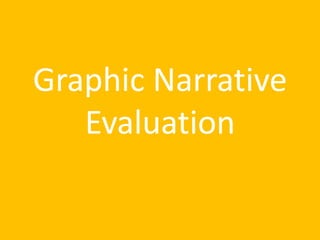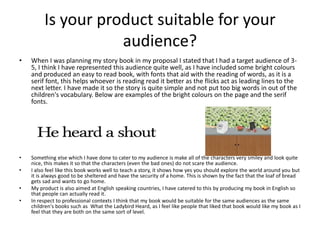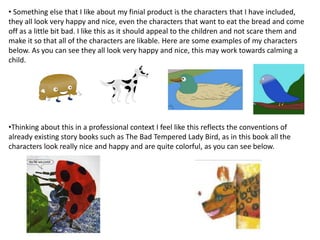The document provides guidance for evaluating a graphic narrative project. It instructs the reader to provide specific details about their work using both written and visual examples. They should find areas of their work to praise, being specific about what is good or what they are proud of. They should also find areas for improvement and specify what they would change if given the opportunity. The template suggests adding additional slides as needed and deleting any blank slides before submission.

























